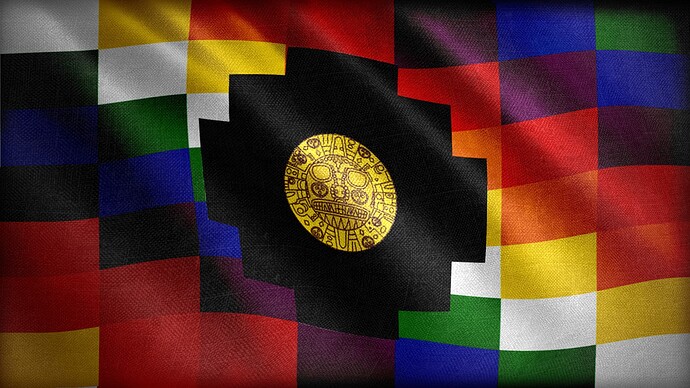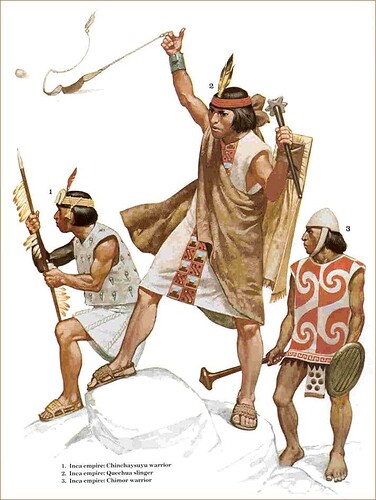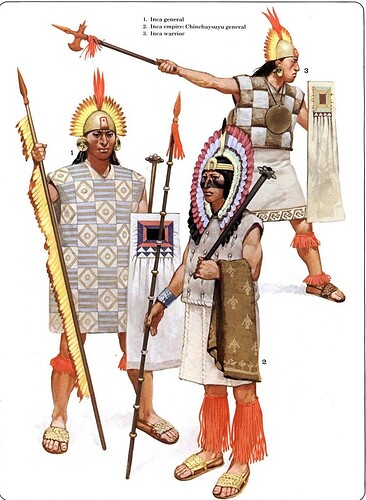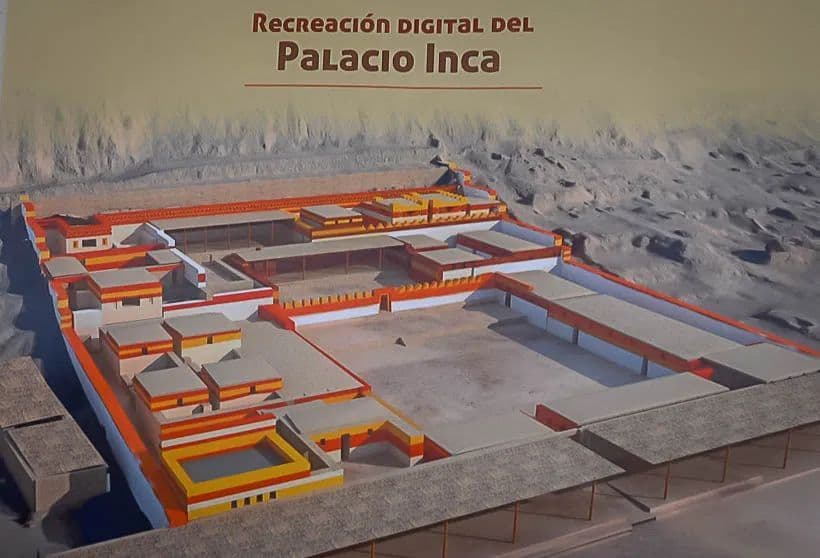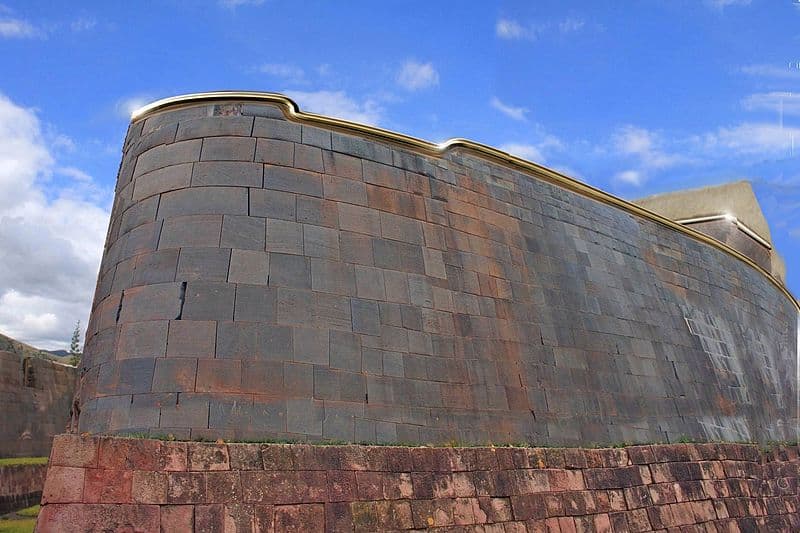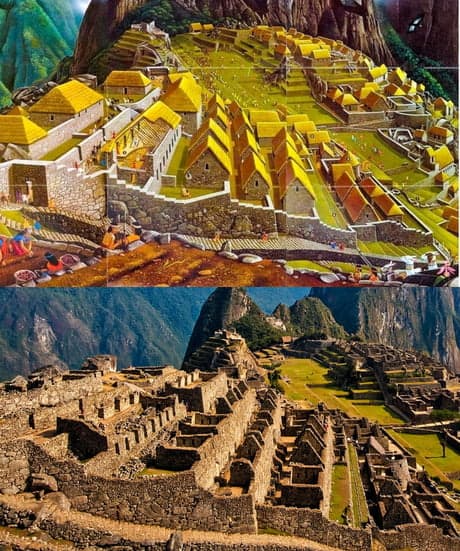I’m going return to America for my next posts, thanks to the fact that the books and documentaries that I have been watching are very connected, the next post will actually be about the Purepecha, but now enjoy the Incas:
In the Andes rose the hegemonic empire of South America, the Inca. The Inca or Tahuantinsuyo empire was a nation that managed to conquer almost all of its neighbors before the arrival of the Spanish and assimilated many elements of other cultures.
The cities they built had many stone buildings that also had stone foundations, this because the mountainous terrain in which they lived was very irregular, also thanks to this they implemented a design of terraced crops to take advantage of space and water. They adopted the use of bronze so they advanced a lot in the manufacture of tools and weapons. His main crops were potatoes, corn, various tubers and multiple types of chilies, in addition to having llamas as cattle. Llamas were particularly useful, because in addition to wool, leather, and food, they served as pack animals. They had institutions like the Acllahuasi in which women were interned to learn advanced manufacturing, be wives of nobles or sacrifices (although they were very infrequent compared to those of animals). The main social unit was ayllu, groups of families united by a common ancestor, in addition the people lived in Kanchas (stone houses with space for cultivation or animal husbandry). Perhaps one of the most important things was its networks of imperial roads with tambos (rest structures every 30km).
Militarily they were quite developed, they began to implement the use of phalanxes when training infantry with long spears, in the most traditional combat their warriors used to carry masses or batons, but in general they were all supported by infantry with projectiles, of which the Bolas launchers and slingers. The army includes many auxiliar troops like the jugle tribes or “antisuyo” tribes who used bows with poisoned arrows. It is also important to mention that they implemented the use of halberds and a kind of prot greatswords, although the former were the ones with more status.
It is also important to mention that they developed a lot of navigation and reached several Polynesian islands, including the island of the Moai, it is possible that thanks to that they came to trade with the Purepechas of Mesoamerica. In addition, the fishermen used a lot the “Totora reed horses”, which were cheap boats and easy to build.
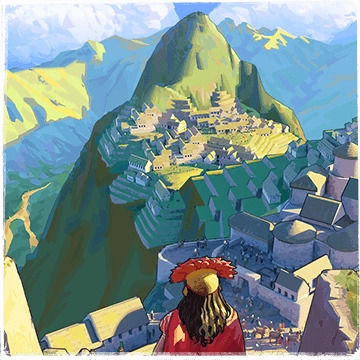
CIVILIZATION BONUSES
- Initial town center spawns with 2 llamas.
- Most buildings cost stone but have many hit points.
- Villagers extracts stone 20% faster and are more efficient extracting stone, because take 50% more from stone mines.
- Totora reed horses: Fishing boats 40% cheaper.
- Villagers take food form farm animals 20% faster.
UNIQUE BUILDINGS
- Kancha: Replaces the house, can keep double of units, garrison villagers and produce one llama every minute. The llama limit depends of the number of kancha.
- Tambo: Replaces the out post and have an aura that increases the speed of the nearby units.
- Kallanka: Barracks and warehouse, villagers can deposit resources here which increases the training speed of their units by 15% for 2s or until they receive resources again. Research blacksmith technologies and is affected by the production bonus.
LANDMARKS
To Age II
Palace of Colcampata: Nearby town centers works 20% faster and gains additional armor.
Acllawasi: Research economic and villager technologies with -30% cost, also ads the next technologies: Professional Fabric, State Artisans.
To Age III
Tipon Waterworks: Are special farms, can be worked up to 10 villagers and produce 30% faster than normal farms.
Coricancha: Fortified version of a temple, shot one additional arrow per garrisoned relic.
To Age IV
Fortress of Sacsayhuaman: The stone walls gains additional armor and ranged units in walls deals +1 of damage.
Palace of Túpac: Fortress that can train Sapa Inca Guards three times faster, this unit also gains +1 of damage and +10% hit points.
UNIQUE UNITS
- Bolas Thrower: Ranged unit, din’t deals much damage, but it reduces the movement of the impacted units, it also has a damage bonus against cavalry.
- Sapa Inca Guards: Upgrade for the spearmen’s in third age, become most powerfull and gains a +1 of range.
- Maceman Runner: Replaces the axeman of the American civs, deals more damage.
-
Chin - cha Raft: Is a better version of the canoe.
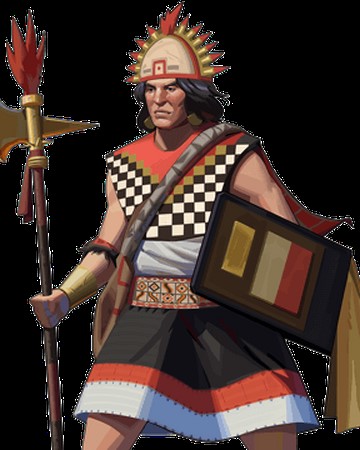
AMERICAN CIVS UNITS
This aren´t unique units, but only are shared with other civs like mexicas and other possibilities like Mayans and Tarasco/Purepecha.
- Slinger: Fast shoot and move unit, but don´t deals much damage.
- Javelin Thrower: Replaces the crossbowmen and have bonus damage against ranged units.
- Axeman (Thanks for the suggestion): Replaces the Man-At-Arms, have less armor but more speed.
- Canoe: Cheap, fast and weak archer ship.
Barracks
- Spearmen: Age I – Becomes Sapa Inca Guards: Age III.
- Maceman Runner: Age II.
Archery Range
- Archer: Age II.
- Slinger: Age II.
- Javelin Thrower: Age III.
- *Bolas Thrower:*Age III.
UNIQUE TECH
-
Antisuyo Recruits: Archers arrows gains poison damage.
-
Pukara: Fortress +20% hit points, ads two sling shoots and can garrison units to reduce their population cap 50% (only when is garrisoned).
-
Imperial Routes: Villagers and traders +10% movement.
-
Spiked Bullets: Slingers +2 damage.
-
Autarchy: +10% of recollection speed for all resources.
-
Aillu: Kancha houses can keep +1 of population and can garrison villagers in order to auto gather the llamas food 15% faster. Houses with villagers also produces llamas 20% faster.
-
Professional Fabric: +1/+1 armor for villagers.
-
State Artisans: Traders gains 10% more gold.
ARCHITECTURE
The Incas developed an architecture based on the extensive use of stone joined into blocks by highly precise cuts. Many structures had stone platforms as foundations to level the steep mountainous terrain, farms were fed by networks of canals connected to man-made lakes, and were built on stepped terraces to take advantage of the land and water. It must be taken into account that the Incas did not have draft animals and that most of their cities were built on mountainous terrain, which only makes what they built and what still remains even more surprising.
